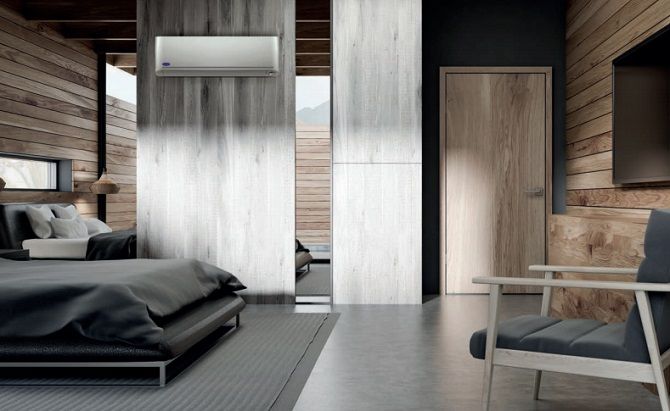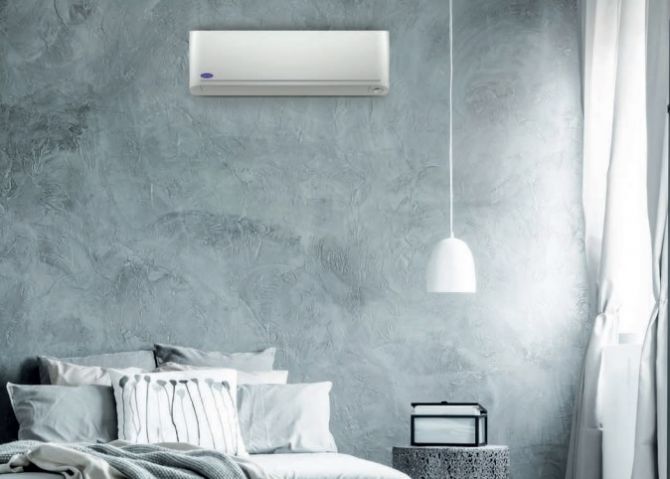 | « Back to article | Print this article |
'A basic thumb rule is that a one-ton AC is good for a 10x10 room, a 1.5-ton for 150 sq ft and a 2-ton for 225 sq ft.'

With the summer season just around the corner, it is time to think of buying an air-conditioner for your house if you need one.
Currently, with some hard bargaining, you may be able to get a discount at a nearby showroom.
As temperatures soar, not only do discounts disappear, even the mechanics who install these machines become harder to find.
Energy-efficiency rising
The government has introduced a series of stringent standards of efficiency and labelling.
Says Chirag Baijal, managing director, Carrier: "The norms have had the effect of creating awareness on the demand side. A consumer today knows that a five-star AC is more energy-efficient than a three-star machine."
Today's consumer typically looks for an air-conditioner that not only takes care of cooling but also works as a purifier and humidifier.
"ACs are already serving the critical function of humidity control. The high-end models now also come with purification technologies," says Vishal Kapur, managing director, MEHO-HCP Air Systems.
Various models today are equipped with filters that can handle PM 1-2.5.
Most good ones use a green refrigerant, HFC 32. Some, such as Hitachi's, have twin-motor technology, which has ducts on both sides, allowing for better circulation from both the left and the right side of the window AC.
Some, like Daikin, have an intelligent eye sensor that identifies a human body within 20 metres and adjusts the cooling requirement automatically.

Inverter technology
An inverter AC technology uses a variable speed compressor to save energy and power up to 50 per cent more than a non-inverter AC.
It runs at full capacity until the optimal temperature is achieved and then runs at part load to maintain it.
According to Croma salesperson Harveer Singh, "Normally a non-inverter AC consumes six-seven units of electricity in 10 hours. An inverter AC consumes 1-1.5 units less per day, which can translate into a monthly saving of around 35 units."
Some of the newer models have built-in 'self-diagnosis' codes to identify potential problems. These codes are useful for self-repair.
Take into account room size
The capacity of AC you choose should depend on a variety of factors.
Says Kapur of MEHO-HCP Air Systems: "Capacity selection for residences should depend on room size, height, occupancy, exposed windows and walls and whether it is the top floor."
Most air conditioners mention the area they can cool.
For instance, the Hitachi (1.5-ton, 5-star, inverter) cools 15 sq m or 170 sq ft while the Bluestar brand cools 16 sq m or 180 sq ft.
Says Singh of Croma: "A basic thumb rule is that a one-ton AC is good for a 10x10 room, a 1.5-ton for 150 sq ft and a 2-ton for 225 sq ft."
Window ACs are easier to install or dismantle and hence are preferred by people living on rent. However, the market is mostly moving towards split ACs as they do not block the window. They are also aesthetically more appealing and less noisy.
The choice of machine should also depend on the number of hours for which the unit is likely to be used. If you plan to run the AC for five-eight hours daily, go for a five-star unit to save on power cost.
If the unit will operate for just a few hours every week, go for a three-star unit. Prices range from Rs 25,000-70,000. Five-star models usually come for above Rs 35,000.
Check whether the coil is made entirely of copper or is a mix of copper and aluminium. Most people prefer copper as the ambient air in India is quite corrosive.

Indoor air quality is crucial: It is believed that apart from cooling, an AC also circulates bad air that spreads diseases.
Says Barun Aggarwal, CEO, BreatheEasy Consultants, a full-service Indoor Air Quality (IAQ) solution provider: "The AC itself does not produce bad air. With the older window air-conditioners, one had the option of a toggle switch to bring in fresh air. This allowed the air in the room to be conditioned and it kept the carbon dioxide level down.
However, the newer wall-type ACs do not have the option of bringing in fresh air and that is where the problems start.
The air in the room will get conditioned, but it will be stale, with high levels of CO2 and volatile organic compounds (VOCs).
With a high wall AC, open a door or window at certain intervals to bring in some outdoor air, though this will increase the load on the AC during peak summer."
A more sophisticated solution is to bring in controlled air from outside, after filtering and cleaning it from the harmful outdoor pollutants.